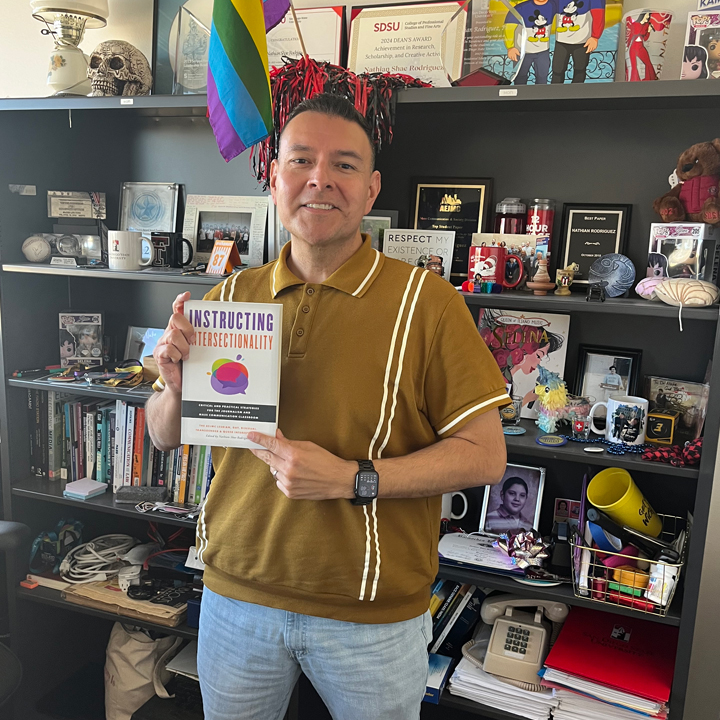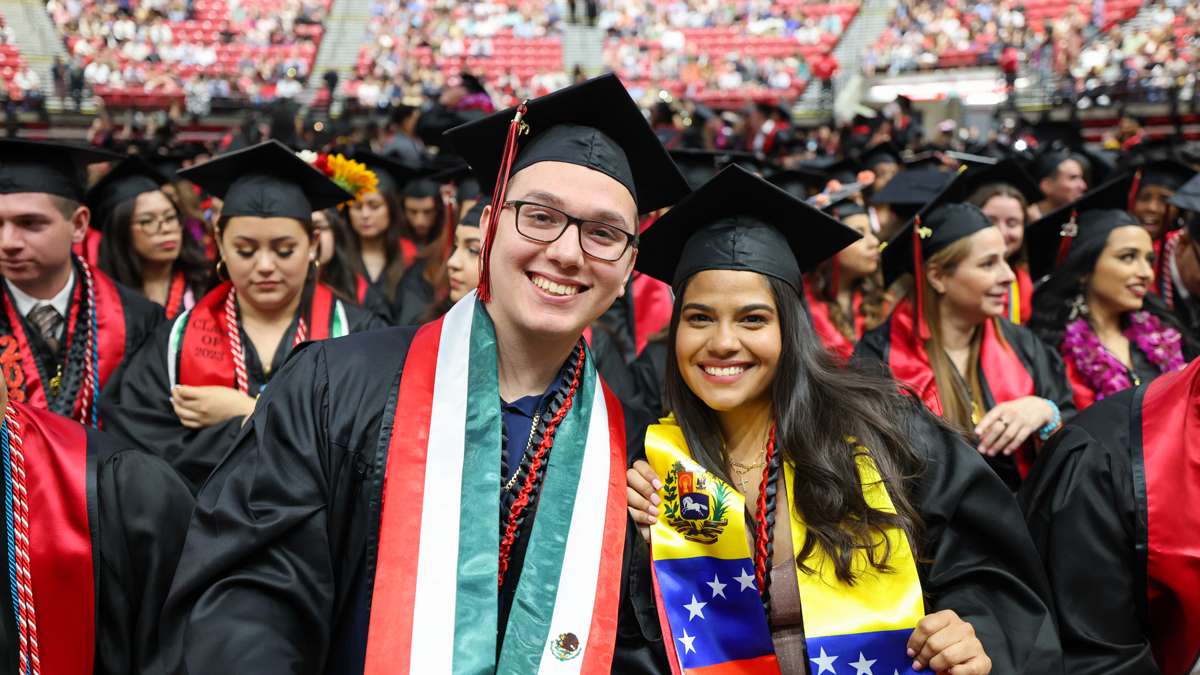Dr. Rodriguez champions intersectional teaching with release of new book

When JMS Associate Professor Dr. Nathian Rodriguez became an educator, he quickly realized that intersectionality was a topic that needed to be integrated into his teaching. Intersectionality is a framework for understanding how various aspects of a person's social and political identities—such as race, gender, class, sexuality, ability and more—interact and overlap to create unique experiences of privilege and oppression. As SDSU is home to a wide variety of identities, Rodriguez found that weaving intersectionality into his lectures helped to make them more inclusive.
“Not all students learn the same, and some students sometimes don’t see themselves represented in lectures. And so I started integrating intersectionality in my teaching, finding ways that I can appeal to people in my class so that they can be included and represented. That way, I can teach to everyone,” said Rodriguez.
After learning various strategies to incorporate intersectionality within his lectures, Rodriguez decided to help write and edit Instructing Intersectionality: Critical and Practical Strategies for the Journalism and Mass Communications Classroom, a book to guide other professors to do the same.
“I asked myself, what would I need to teach a class? I needed some sort of context, some examples that I could pull from if possible and experiences of those professors who taught those classes,” said Rodriguez.
Rodriguez posted a call for proposals and received emails from professors all over the world with experience teaching intersectionality. A unique perspective that Rodriguez’s book includes is from an SDSU graduate student, Arleen Jia Rasing.
“What I wanted to include that isn't included in other books is an epilogue written by a student who has benefitted from this type of teaching, a student who appreciated it because they themselves are from an intersectionally marginalized identity,” said Rodriguez.
Although the book is marketed towards journalism and mass communication classrooms, Rodriguez believes that its usefulness can extend past that.
“Anybody in any field can pick up this book and read a story, and you can apply it to any class and find very practical strategies that you can implement extremely quickly,” said Rodriguez.
Rodriguez, who is also the Associate Director of JMS, began his higher education journey at the University of Texas where he received his B.A. in mass communication. He then went on to receive his M.A. in journalism and mass communication from Kent State, and finally his Ph.D. from Texas Tech University. Rodriguez has been with JMS for nearly nine years and has 10 years of professional radio experience as well.
Instructing Intersectionality: Critical and Practical Strategies for the Journalism and Mass Communication Classroom can be purchased as a physical or ebook from Barnes & Noble.


